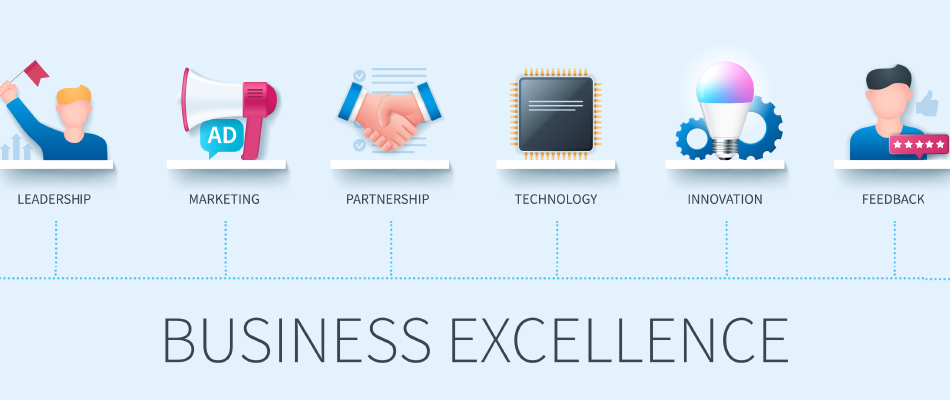At Regenesys Business School, we constantly engage in robust debate about what makes for good leadership. We integrate the learnings into our academic offerings and our executive development programmes, resulting in one of the most well-rounded, informative and next-level International Leadership Development Programme (ILDP) in existence today.
A recent round table conversation with Regenesys faculty came up with the following requirements for a top-level International Leadership Programme.
We can loosely group the insightful findings under three headings:
- A sound International Leadership Programme should be based on a carefully conceived purpose and structure:
- International leadership development should be couched within an overall purpose. It’s not just a matter of attending classes and workshops and participating in small groups. There has to be a deliberate outcome for the individual and for the organisation – on a local, national and international level.
- A strong ILDP should have insightful and provocative content. Paradigms should shift, mindsets should be altered, and new revelations incorporated – in short, the key word is ‘disruption’. Ah-hah moments and creative discomfort must be part of the experience.
- Crucially, International Leaders should be developed and not just trained. It is not just about getting new academic informationbut internalising the practical application, learning from colleagues in the business and working on value-adding projects that expose them to different areas within their disciplines.
- Participants need to understand different leadership styles and approaches, and their contexts, along with the practical application thereof – particularly withing the sphere of international leadership
- Graduates of the Regenesys International Leadership Developmement Programme will be able to effectively inculcate learnt skills down to senior managers, and executives must participate in the process of leadership development as sponsors, guides and coaches.
- The programme should include an outside guest faculty who has had extensive successful experience in related fields. Their role is to share deep-dive insights, and demonstrate the actions involved in driving leadership in their own organisations.
2. The leadership programme should deliver tangible results:
- Action driven projects are a powerful way of addressing real problems in the business. Participants get to apply what they have learned and define the performance measurements and outcomes to be reached. These projects should always be based in the workplace so as to ensure practical implementation of the valuable insights and lessons gained after participating in the International Development Programme.
- A safe environment should be created for immersive learning, mimicking the real world as closely as possible.
3. Leadership development must drive personal growth:
- Participants in the International Leadership Development Programme require space to reflect on what they are learning, how it affects them and how to apply it.
- There is a requirement to be able to grow and develop a professional network outside the organisation in an ever-connected and globall commercial environment
- There should be the opportunity for Moments of Connection
- Good leadership development must include the unlearning of old practices, and opening up to new transformative in sights – this is key to the core function of the International Leadership Development Programme offered by Regenesys Business School.
Leadership development is also bedevilled by a flood of weasel-words: push boundaries, think outside the box, pivot, think differently, be agile, and many more. These terms are often used indiscriminately, and without much real content or understanding behind them. They purport to make the user look informed but add little insight.
Every organisation need leaders in all areas of operation. This applies to business, the public sector and non-profits. It applies to health, education and public order. Leaders are required in civic organising and community groups.
Right now, you are in a position of leadership. Whether you are a CEO or a clerk, a homemaker or a nurse, or an astrophysicist, you are a leader. Think about how you learned the art of leadership. You probably didn’t have access to the right sort of training, coaching, practice and feedback. This made for a weary process of trial and error. Right now, you are probably aware of gaps in your own leadership skills set. Multiply this through all the leadership roles in your organisation, and you will end up with an organisational leadership deficit.
International Leadership Development is much more than sending a few people on open public courses, or instructing the training department to develop a ‘course’. Here are a number of pointers to help you on your way:
1. Define your company’s leadership needs
A good start is to think about any specific leadership gaps that your organisation has or may soon face. For example, are any managers or experts looking to retire soon? And if current leaders do leave, what attributes and characteristics would the business miss?
Think, too, about the company’s short-term and long-term strategic goals. For example, if the organisation is on a fast track for growth, your International Leadership Development Programme should be aligned to ensure the business has the right leadership in place to meet those priorities.
Also, reflect on what leadership means to your business. What are the traits your firm values most in its leaders? Dig deep on this, and avoid reaching for vague descriptors such as “go-getting” or “perceptive.” Recent surveys by Regenesys found that traits like purpose, integrity, fairness and decisiveness often rise to the top of the list as the most important attributes for international business leaders to possess.
2. Develop, don’t train
Remember that leaders of an international calibre can be nurtured and developed, but not manufactured. When creating an International Leadership Development Programme, think about how you can place participants in situations that will require them to learn and grow. Examples include giving candidates the opportunity to step up when other leaders are away or to collaborate with colleagues in other departments on a special project. (Collaboration abilities are very important for today’s leaders.)
Mentoring, training and organisational planning, with individual activities such as job rotation, job shadowing and project leadership, are often components of effective leadership development programmes. Classroom training, such as the Regenesys PGDM or MBA programmes, executive education and online courses might also be part of a formal programme. Also, be sure to support participants with ongoing feedback and coaching; this can be especially helpful coming from senior managers who can serve as role models and mentors.
3. Identify potential leaders
Potential international leaders may be anywhere in your company — and identifying them isn’t always easy. A common mistake with International Leadership Development Programmes is focusing resources only on top-performing employees, or employees that get the most air time. However, just because someone has demonstrated excellent work in his or her current position doesn’t mean that person will evolve into a global leader for the business. Have an open mind, and be willing to look beyond the most obvious candidates. You might also consider inviting promising employees from other departments to engage in the International Leadership Development Programme.
An effective leadership development programme should give employees the skills and confidence to ascend the career ladder. You may find that some people are happy to stay in their current jobs or pursue a different path that doesn’t take them into management. That’s okay. They can be leaders for your business in other ways. Just make sure that all employees are aware of the leadership development opportunities available in your organisation and have an opportunity to take advantage of them.
4. Measure results
Before formally implementing the International Leadership Development Programme, determine how you will measure the programme’s success and impact. Some measurement options include:
- The number of participants who complete the programme successfully
- The number of participants you promote after they have gone through the programme
- Increases in employees’ leadership responsibilities
- Whether peers feel that programme participants are developing into effective leaders
In addition, as part of your evaluation, assess whether employees developed leadership skills that will help them be more effective at their current jobs — not just qualify them for promotions down the line.
Effective business leaders also understand how every facet of the organisation works. They don’t necessarily know all the fine details, but they do have a working overview of operations. So, encourage employees in your leadership development programme to stretch their abilities even further by taking on projects that don’t typically cross their desks. This will require them to work outside their comfort zones and think along new lines. Their ability to adapt and thrive in these situations is another measure of success. (Just be careful not to overload these workers in the process.)
5. Keep retention in focus
In many ways, bespoke International Leadership Development Programmes help you to identify and groom talented employees who could potentially assume key management positions in the future. So, you want to be careful not to lose these valuable team members.
Offering promising employees compensation to match their developing skills is one strategy. You might also consider holding regular face-to-face meetings with future leaders to ensure they’re satisfied with their career path and feeling engaged. An employee rewards system, in which staff members earn incentives such as extra vacation days, designated parking spots or letters of appreciation from higher-ups for specific achievements long after the programme has ended, can also positively impact retention.
Creating a world-class International Leadership Development Programme starts with equipping leaders with the specific skills, tools and behaviours they will need to confidently lead others and drive the performance of their team or organisation. With that in mind, here are five skills a comprehensive leadership development programme should include.
5.1. Coaching
Coaching is one of the best methods leaders can leverage to unleash the full potential of their direct reports. The Regenesys International Leadership Development Programme recognised this crucial aspect and has built this into their revolutionary programme syllabus. Coachable moments happen every day, and a leader with strong coaching skills can seize these moments and turn them into valuable learning experiences. This skill can go a long way in positively influencing employee engagement and productivity. Gone are the days of vague yearly reviews; employees today want feedback, motivation and guidance in real time, and leaders must be able to effectively provide those things.
5.2. Accountability
The most successful leaders know that their success hinges more on their team’s performance than their own. Leaders are no longer individual contributors and will be not be assessed that way. They are held accountable for others’ actions and results, as well as their own, and must take accountability for team outcomes – the good and the bad. By training leaders on this important distinction through the Regenesys International Leadership Development Programme you can ensure that they will be capable of defining accountabilities and rigorously holding direct reports to those commitments, so that everyone can succeed and produce the results they need.
5.3. Change Management
An organisation is not a static entity that can be frozen in time. Changes in the marketplace, employee turnover, company growth and countless other factors contribute to ongoing changes. Whether the changes feel like a ripple or a tidal wave to employees, leaders must be prepared to shepherd them through the changes, which requires training leaders to manage change before it ever even happens. Change management training should be part of any International Leadership Development Programme to ensure that leaders can harness the power of vision, provide strong leadership during any season and capitalise on the transitional times to improve performance. Regenesys graduated are ensured to be ready and prepared for change management within their organisations
5.4. Influence and Negotiation
Effective leaders don’t command with authority; they inspire, persuade and encourage others to make their vision a reality. By learning how to be strong influencers and fair negotiators, leaders will return to their roles knowing that it is not about who has the most power but about who has the best influence on employees to achieve results. Rather than demanding that employees do something because of authority or hierarchy, leaders will use this subtle quality to build relationships, align priorities, and find a win-win that ultimately leads to completed projects and delivered results.
5.5. Communication
Communication training is often a cornerstone of International Leadership Development , but how effective and up-to-date is it? What format does it take? Communication is not a skill that leaders can learn by just reading, watching a video or listening to a presentation about it. In a leadership role, communication happens at all hours of the day through large presentations, one-on-one conversations, phone calls, text messages, videoconferencing and, of course, emails. Although it’s not a new skill to leadership development, communication is one that needs to be optimised in order to be fully relevant and useful to the leaders of today and tomorrow.
Communication is a skill that needs to be optimised in order to be fully relevant and useful, and this forms a heystone of the Regensys Business School’s International Leadership Development Programme
Closing the gap between the desire for excellent leadership and the reality of failed leadership programmes requires a fresh approach to training and development. Consider company-specific challenges and the needs of leaders in today’s world, and ask for input from current leaders, to create a leadership development programme that is successful in the eyes of everyone involved. Approaching Regenesys Business School to discuss and develop an International Leadership Development Programme that suits you, your employees and organisation is the first step to taking your business concerns to the pinnacle – where it should be.
The International Leadership Development Programme (ILDP) from Regenesys Business School comprises of a world-class, innovative, and disruptive curriculum that develops leadership competencies for the new digital world.
The intense programme explores cutting-edge knowledge, global trends and best practice in digital transformation, entrepreneurship, strategy, and innovation from the fastest-growing companies in the USA.
Participants are exposed to applied learning using innovative learning techniques, master classes, exposure to giants of industry, focused networking opportunities and commercial
matching to sector-level opportunities. The programme is facilitated by global faculty comprising experts in specialised fields as well as top business leaders.








